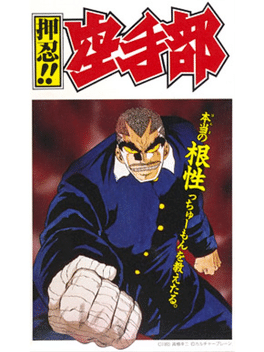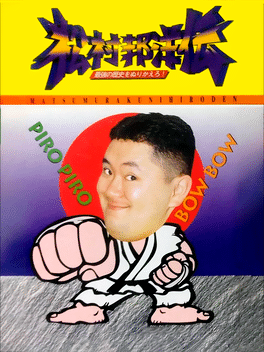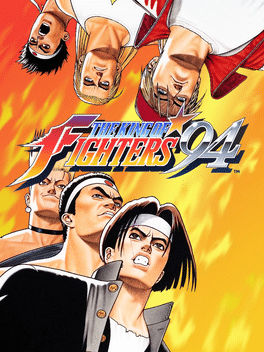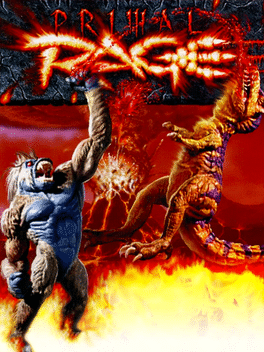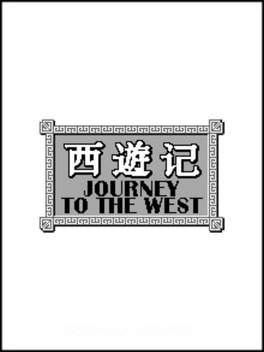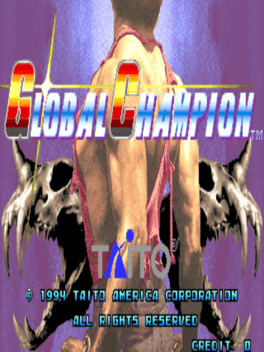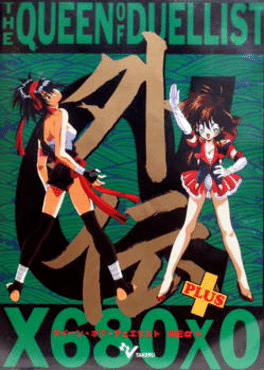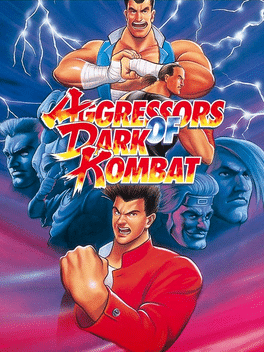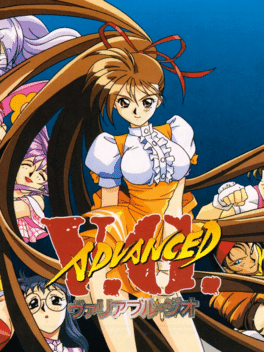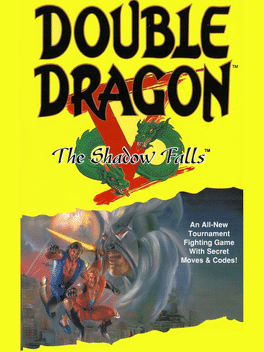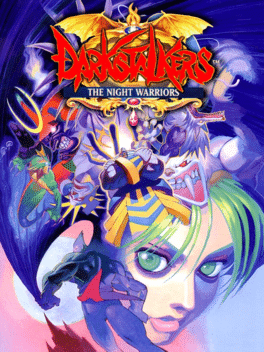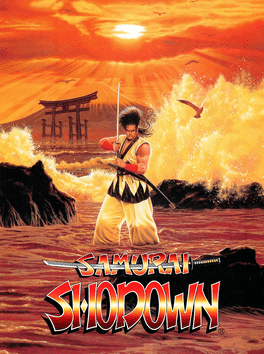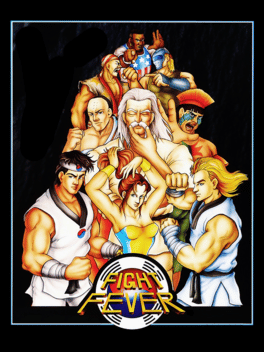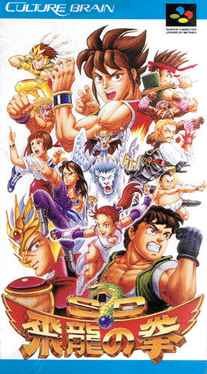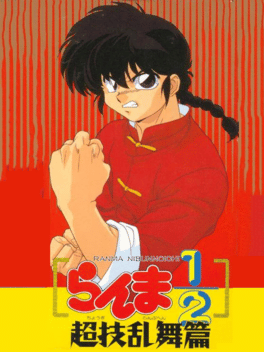New Nintendo 64 Games - Page 94
-
Osu!! Karate Bu
1994
Osu!! Karate Bu
1994
A Super Famicom fighter game based on the delinquent martial arts manga of the same name. It was developed and published by Culture Brain in 1994. The game is a standard martial arts one-on-one fighter in most respects, though features a few uncommon aspects. The first of which is that the player's health bar does not replenish after each round, and the fight continues as each bar is depleted. The second is that the player can recover from losing all their health if they have enough on their power (or qi) gauge. The game counts to three, like in professional wrestling, and the player has the chance to recover a small amount of health in exchange for their power. -
Matsumura Kunihiro-den: Saikyou no Rekishi wo Nurikaero!
1994
Kunihiro Matsumura, famous for his impersonations, battles as the "karateka" to face off against seven different opponents. With original style and gameplay, the game uses a parody of fighting moves along with various gag moves such as the Piro Piro and Bow Bow evasion technique. -
The King of Fighters '94
1994
star 6.7Rugal Bernstein is an incredibly rich and notorious arms and drug trafficker, as well as an incredibly skilled and ruthless fighter. Having become bored with the lack of competition, Rugal decides to host a new King of Fighters tournament. Rugal has his secretary travel to eight destinations around the world and invite fighters to his new tournament. Unlike the previous KOF tournaments depicted in the Fatal Fury series, the new King of Fighters is a team tournament, with eight teams of three, each representing a different nationality, participating this time. Most characters come from other SNK games, such as Team Italy, which is composed of three heroes from the original Fatal Fury: Terry Bogard, Andy Bogard and Joe Higashi. The two heroes from Art of Fighting (Ryo Sakazaki and Robert Garcia) are featured along with their mentor and Ryo's father (Takuma Sakazaki) make up Team Mexico. Team Korea features Kim Kaphwan from Fatal Fury 2 as the leader of two convicts he's trying to reform Chang Koehan and Choi Bounge, -
Primal Rage
1994
Primal Rage
1994
Arcade Super Nintendo Entertainment System Sega 32X Sega Mega Drive/Genesis 3DO Interactive Multiplayer DOS Amiga Atari Jaguar Atari Jaguar CD Sega Saturn PlayStationstar 5.5A meteor struck the Earth, and caused great chaos. Seven gods from ancient times awoke, and are now attempting to take control of the post-apocalyptic world. Primal Rage is a one-on-one fighting game featuring dinosaurs and giant apes as the fighters. The graphics are done with digitized stop-motion animation. Gameplay is similar to Mortal Kombat in that it is viewed from a side perspective, and features deadly finishing moves at the end of the match. -
Journey to the West
1994
Journey to the West
1994
The Journey to the West tells the story of the fourteen-year pilgrimage of the monk Xuanzang, one of China’s most famous religious heroes, and his three supernatural disciples, in search of Buddhist scriptures. Throughout his journey, Xuanzang fights demons who wish to eat him, communes with spirits, and traverses a land riddled with a multitude of obstacles, both real and fantastical. An adventure rich with danger and excitement. -
Global Champion
1994
Global Champion
1994
Global Champion follows the same fighting game conventions established by Street Fighter II. The player's character fights against his or her opponent in best two-out-of-three matches in a single player tournament mode with the computer or against another human player. The player has a character roster of nine fighters to choose from, and three bosses, each with their own unique fighting style and special techniques. -
Aggressors of Dark Kombat
1994
star 5.8Aggressors of Dark Kombat offers virtually no storyline to explain its fights. In fact, the prefight conversation sequences show that the fights are not much more than chance meetings. The player's chosen character will advance through a series of stages fighting a series of opponents because he doesn't like the way the other guy looks. The game is viewed from the side perspective that virtually all 2D fighting games use. One player can fight against a computer-controlled opponent, or two players can fight against each other. Each character's life bar appears on the upper left or right of the screen, depending on starting location. A timer is located between the two life bars. When one character is drained of energy or the timer runs out, the match is over and the character left standing (or with more life, if neither characters were drained of energy) wins. -
Advanced V.G.
1994
Advanced V.G.
1994
An updated re-release of the original Variable Geo fighting game that removes the hentai scenes. -
Double Dragon V: The Shadow Falls
1994
star 4.4Double Dragon V: The Shadow Falls! Featuring 12 big lightning-fast characters! Four to six special moves for each fighter! Set your own strength, defense and more. Three different fighting modes. Secret moves and codes! Customizable controls. Unique final moves. Hot rock music tracks and 130+ sound effects! -
Darkstalkers: The Night Warriors
1994
star 7.2The DarkStalkers have been unleashed! All the creatures from your darkest dreams have materialized to wage an eternal war for domination of the night. The fate of all humanity rests on who wins this epic struggle. You control the power of your favorite supernatural monster to combine their special attacks and unique abilities in a head to head fighting challenge. It's a fierce and brutal conflict for supremacy in the monster hit of the year! -
Samurai Shodown
1994
Samurai Shodown
1994
The Game Boy version of Samurai Shodown includes all the characters, stages, and most of the special moves, but has no combos, fatalities, or voices. All the music tracks are included, albeit in scaled-down form. It also features two new characters: Kuroko and Hikyaku. -
Fight Fever
1994
Fight Fever
1994
The game plays similarly to other 2D versus fighting games, especially both SNK's Fatal Fury 2 and Art of Fighting. In fact, it shapes itself after Fatal Fury 2 while it uses Art of Fighting's game engine. There are 8 characters to select from and two boss characters (the first boss character is only playable in two player mode). The object of the game is to win two matches out of three. Each character has a set of moves in addition to two basic punches and kicks. Each character also has a super move called a "Danger Move", which are similar to the Desperation Moves from Fatal Fury 2. Players also have the ability to taunt others, but unlike games such as Art of Fighting, this has no effect and would actually leave the player open to attacks. There are two bonus games that reward the player with points dependent on how successful the player is. The first game is a brick-breaking game that requires rapid pressing of the A button. The second bonus game requires the player to break boards held up by trainers popping -
Sangokushi 3
1994
Sangokushi 3
1994
THE FATE OF THE HAN DYNASTY IS IN YOUR HANDS! In the final years of the Eastern Han Dynasty, under the reign of Emperor Ling, ten eunuchs in the imperial palace abused their power. The country was in a dreadful state of affairs; bandits began an uprising, and the people were in turmoil. The emperor asked the lords of the land to crush the rebellion, but this only resulted in a race for power. After Dong Zhuo usurped the throne only to be quickly defeated, civil war erupted. Finally, it was Cao Cao who took control of the emperor, commanding the lords in his name. After years of harsh fighting, Cao Cao united the north and prepared to conquer the south in an attempt to unite all of China. Liu Bei, the fate of the Han Dynasty is in your hands! Will you linger in fear, waiting for death to find you? Or will you take a stand against the evil forces of Cao Cao? Don't hesitate; take your five tiger generals and rush to destroy the enemy! -
SD Hiryuu no Ken
1994
SD Hiryuu no Ken
1994
SD Hiryuu no Ken is an Action game, published by Culture Brain, which was released in Japan in 1994. -
Ultimate Fighter
1994
Ultimate Fighter
1994
Get ready for furious fighting action with ULTIMATE FIGHTER! The evil enemy made a raid on Rick's master's training school, took symbols and swords away, and left a letter of challenge behind. Rick, having vowed to be a true fighter, took up this challenge to win back the lost items. Sharpen your fighting skills and prepare for devastating, bonecrushing battles. Rick's fate is in your hands. The challenge addressed to him is also made to you. The success of his quest depends on your courage, cunning, and flawless martial arts technique. -
YuYu Hakusho 2: Kakutou no Sho
1994
YuYu Hakusho 2: Kakutou no Sho is an Action game, developed by TOSE and published by Namco, which was released in Japan in 1994. -
ClayFighter: Tournament Edition
1994
star 5.6The Tournament Edition of Clay Fighter fixes some glitches and adds new features to the original 2D fighting game. Most scenarios were changed or redone, the graphics are brighter and the gameplay is faster. The characters can now perform three and four-hit combos. More voice-overs and a new introduction cut-scene were added. -
Ranma ½: Chougi Ranbu-hen
1994
star 7Ranma gets a letter explaining that they just received the recipe to the most valuable of all treasures, the Maneki Neko, which has the ability to grant any wish. Ranma must then set out to find the 12 ingredients of the Maneki Neko, located all over the world, before one of their rivals does the same. The game was scheduled to be released in North America under the title of Ranma ½ II: Anything-Goes Martial Arts, but went unreleased in the West.
